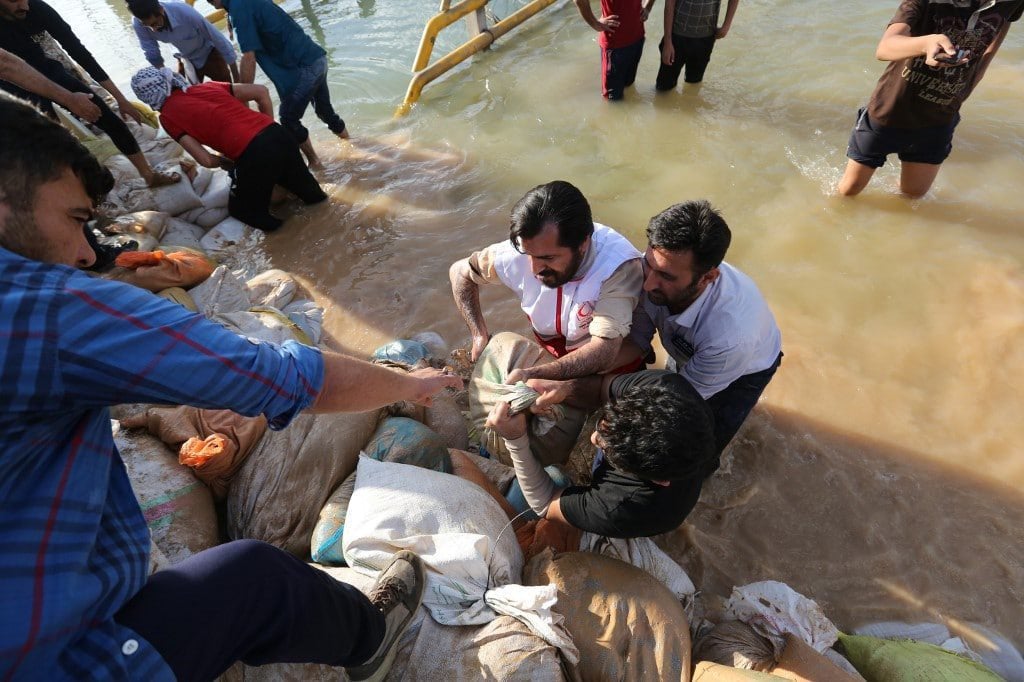
Iran heralded its New Year, which began on 21 March 2019, with a series of devastating floods that affected 25 of the 31 provinces over the course of two months and caused widespread damage. Social media was filled with images of homes and buildings being swept away amid reports of up to 71 deaths and thousands of injuries. The repair bill is estimated to be around $2.5 billion.
The floods were the worst to hit the country in 50 years. Yet while the costs as well as the criticism of the government’s response to the disaster mounted, the benefits were also discussed. Iran has suffered from declining rainfall since the 1990s and severe droughts in the last few years. Since the floods, most of Iran’s dams that had suffered from falling water levels have been refilled and are once again generating electricity at full capacity.
Heavy rains first affected the country in the autumn of 2018, when precipitation rose 205 per cent compared to same period in 2017. The high precipitation continued into 2019, with 290 mm of rain falling in the two first months of the year, compared to 104 mm for the whole of 2018.
The ensuing floods devastated cities and villages. In some parts of the northern Mazandaran Province, streets were inundated by up to three metres of water. The next area to be hit was the northern coastline. The fact that the floods started during the New Year holidays, when many Iranians travel to the northern provinces to relax, added to the number of potential victims. The authorities were able to limit the death toll by carrying out mass evacuations and redirecting the water flow. In Khuzestan Province alone, 14 cities and 110 villages were evacuated.
As the floods headed into their third week, Interior MInister Abdolreza Rahmani Fazli announced that 4,400 villages had faced unprecedented flooding, particularly in Lorestan and Khuzestan provinces. In addition, 725 bridges were destroyed and 14,000 km of roads were damaged in 68,000 locations, severely affecting traffic and safety. Agriculture sector losses were put at around $334.5 million. The electricity sector was also damaged, with 2,352 villages losing their electricity supply. The floods also damaged 130,000 homes across the country, rendering 55,000 of them uninhabitable.
After a flash flood hit Shiraz, killing 21 people in a matter of minutes, the Supreme Leader Ali Khamenei called for rapid action to help those affected. Many other officials, including President Hassan Rouhani, the head of the Islamic Revolutionary Guard Corps (IRGC) and cabinet ministers, made similar statements.
Thousands of volunteers answered the call, but public anger over the perceived mishandling of the crisis has been fierce. Rouhani, for instance, came under fire for spending his holidays on Qeshm Island in the Persian Gulf while cities on the mainland were being swept away. The governor of Golestan Province, who was spending his holidays abroad and did not return immediately after the floods hit, was forced to resign.
The criticism prompted Rouhani to send several ministers and deputies to tour the flood-hit provinces and promised that his administration would provide compensation and support for reconstruction. However, in another statement, he blamed Iranians for damaging nature, saying that the floods were a clear sign of the effect of this damage.
The floods have also been used as a political tool. While the army and especially the IRGC began the clean-up process, the administration was criticized for moving too slowly. Rouhani lashed out at critics and the IRGC for its “explosive containment of the floods”, referring to its use of explosives to redirect flood waters away from endangered cities. He also accused the United States of immorality for introducing new sanctions following its abandonment of the nuclear deal in 2018, saying they could have been delayed for at least a year.
The government is now under immense pressure to reconstruct flood-affected areas. However, it lacks the financial means and international support to do so because of the sanctions. In the medium to long run, however, the added value of the floods in terms of exported electricity and renewed agricultural projects may go some way to mitigate the losses.



